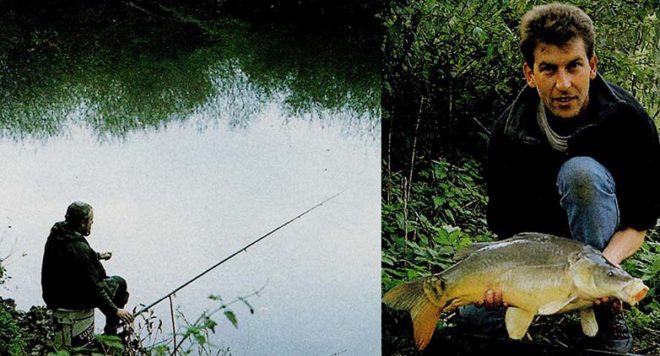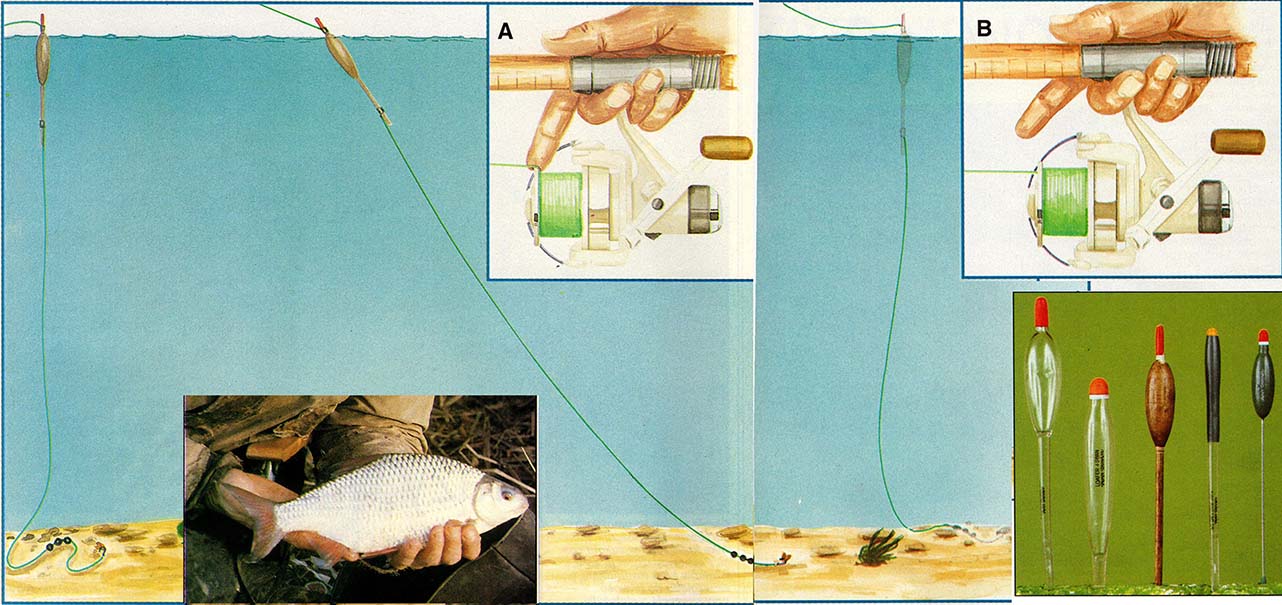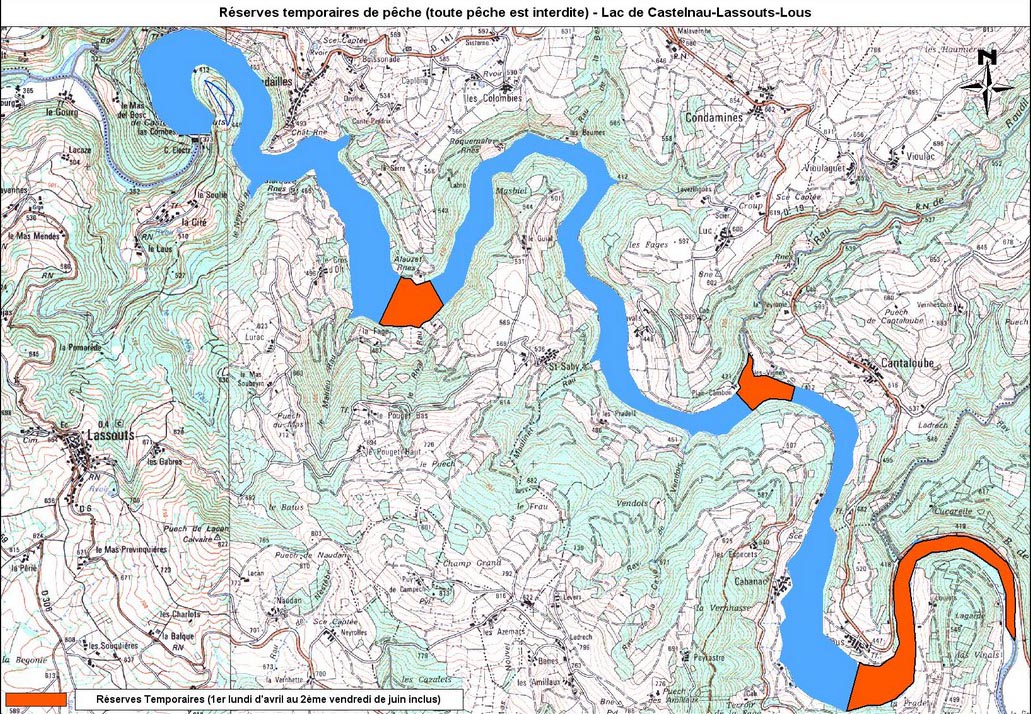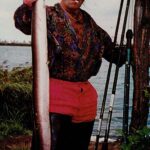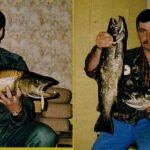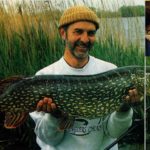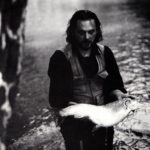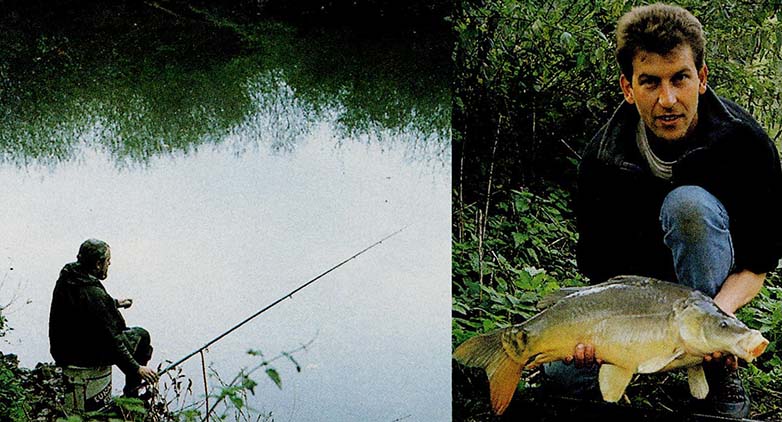 Każdy „dołek”, oprócz tego, że są w nim ryby, jest dość trudny do obłowienia. Dla Rudolfa Schmidta jest to najatrakcyjniejsze łowisko w rzece.
Każdy „dołek”, oprócz tego, że są w nim ryby, jest dość trudny do obłowienia. Dla Rudolfa Schmidta jest to najatrakcyjniejsze łowisko w rzece.
Ryby nie są „porozrzucane” w wodzie jak rodzynki w cieście. W pewnym momencie odkryliśmy, że po drugiej stronie rzeki, w pobliżu gęstych nadbrzeżnych zarośli jest znacznie głębiej niż w całej rzece – około trzech metrów, a nie półtora jak wszędzie. Od tej chwili będziemy nazywać to łowisko po prostu „dołkiem”.
Miejsce to ma tylko jedną wadę: wędkowanie w nim możliwe jest tylko z przeciwległego brzegu. Rosnące po drugiej stronie krzaki są tak gęste, że z tamtego brzegu nie ma żadnej możliwości dojścia do rzeki. Wymusza to na nas łowienie na odległość 20, a czasami nawet 25 metrów. Gdybyśmy zdecydowali się na metodę spławikową, nasz spławik musiałby być dość duży (niezbędny ciężar rzutowy), a wtedy przynęta nie spływałaby w naturalny sposób z prądem rzeki. Z tego też względu decydujemy się na lekką gruntowkę, a ponieważ idziemy z duchem czasu, będzie to wędzisko typu winkelpicker.
Nasz dołek jest dość trudny technicznie do obłowienia. Najgorsze są zwisające nad wodę gałęzie krzewów. Co prawda takie naturalne zadaszenie przyciąga ryby ze zdwojoną siłą, jednak bardzo utrudnia wykonanie rzutu idealnie pod drugi brzeg. Na dnie dołka leży też trochę kamieni, sterczy sporo korzeni. Musimy więc liczyć się także z częstymi zaczepami.
Wygodne nęcenie
W łowisku tym jest jednak dużo ryb. W gmatwaninie korzeni oraz w pobliżu gęstych krzaków bardzo chętnie szukają schronienia przede wszystkim białe ryby oraz karpie. Wędkowanie pod drugim brzegiem ma też pewną zaletę – możemy wygodnie, a do tego bardzo precyzyjnie zanęcić wytypowany dołek. Nęcimy oczywiście przed łowieniem i systematycznie donęcamy w trakcie.
No to zaczynamy.
10-gramowy ciężarek w zupełności wystarczy, aby dorzucić w wybrane miejsce i przytrzymać na dnie przynętę, na przykład ziarenko kukurydzy na złotym haczyku nr 10. Przynęta leży na dnie w odległości około pół metra od krzaków. Wędzisko winkelpicker odkładam tak, że szczytówka sterczy do góry pod kątem 45 stopni.
Mam pierwsze skubnięcie. Na początku bardzo delikatne, potem bardziej zdecydowane. Moja ręka zawisa nad rękojeścią wędziska. Szczytówka przygina się i lekko podryguje. Zacięcie! Ryba siedzi na haczyku. Po krótkiej walce 20-dekagramowa płoć ląduje na brzegu.
Prawdę mówiąc, już po zachowaniu się szczytówki zorientowałem się, że moją przynętą zainteresowała się płoć. Te wszędobylskie ryby zawsze pierwsze zjawiają się w zanęconym miejscu. Łowię jeszcze trzy płocie. Wszystkie mniej więcej tej samej wielkości. Po jakimś czasie udaje mi się wyholować półtorakilogramowego klenia.
Kolejne zacięcie, jednak tym razem zdecydowanie większy opór. Ryba ani myśli ruszyć się z miejsca. Ucieka po pięć, sześć metrów i ciągle muruje. Dopiero przed samym lądowaniem dała się oderwać od dna. Półtorakilogramowa brzana znalazła się w końcu w podbieraku.
Aby nie było mi jednak za wesoło, przy następnym zarzuceniu wędki mam zaczep. Dowiązuję nowy przypon, gdyż żyłka przyponowa jest już za bardzo przetarta. W międzyczasie zanęcam całą garścią kukurydzy (rurą do rzucania), od czasu do czasu wrzucam też do wody kule zanętowe zagniatane „na bieżąco” z panierki i kukurydzy.
Znowu branie, najpierw lekkie szarpnięcie, a następnie zdecydowane dogięcie drgającej szczytówki. W momencie zacięcia wygina się całe wędzisko. Mam wrażenie, że zaczepiłem o coś na dnie. Po chwili ciężar ożywa. Ryba stoi przez chwilę w jednym miejscu, a następnie rzuca się do błyskawicznej ucieczki. Jest to moment, w którym najczęściej traci się karpie – siłowe odejście, a hamulec jest jeszcze dość mocno dokręcony po ostatnim siłowaniu się z zaczepem.
Ucieczka z prądem
Tym razem jestem ostrożny. Karp skręca w bok i zaczyna jeszcze szybciej uciekać z prądem. Oddałem już prawie 30 metrów żyłki. Udaje mi się jednak podciągnąć rybę na środek rzeki, a potem pod mój brzeg.
Ryba wytrwale chodzi raz w jedną, raz w drugą stronę. Od czasu do czasu muruje także do dna. Całe szczęście, że nie próbuje uciekać w krzaki wikliny rosnące w wodzie kilka metrów poniżej mojego stanowiska.
Po kilku minutach karp staje w prądzie na przeciwko mnie. W ostatnim zrywie ustawia się w poprzek nurtu, hamulec natychmiast oddaje trochę żyłki i mój przeciwnik odskakuje kilka metrów na środek rzeki.
Kiedy ponownie podciągam na powierzchnię – karp wykłada się i przestaje walczyć.
Przygotowany wcześniej podbierak po raz kolejny okazuje się bardzo przydatny. Wspaniały karp pełnołuski, ma około 5-6 kg.
Moja ulubiona rzeka ma wiele wspólnego z polem golfowym – precyzyjne trafienie do „dołka” prawie zawsze oznacza sukces…
